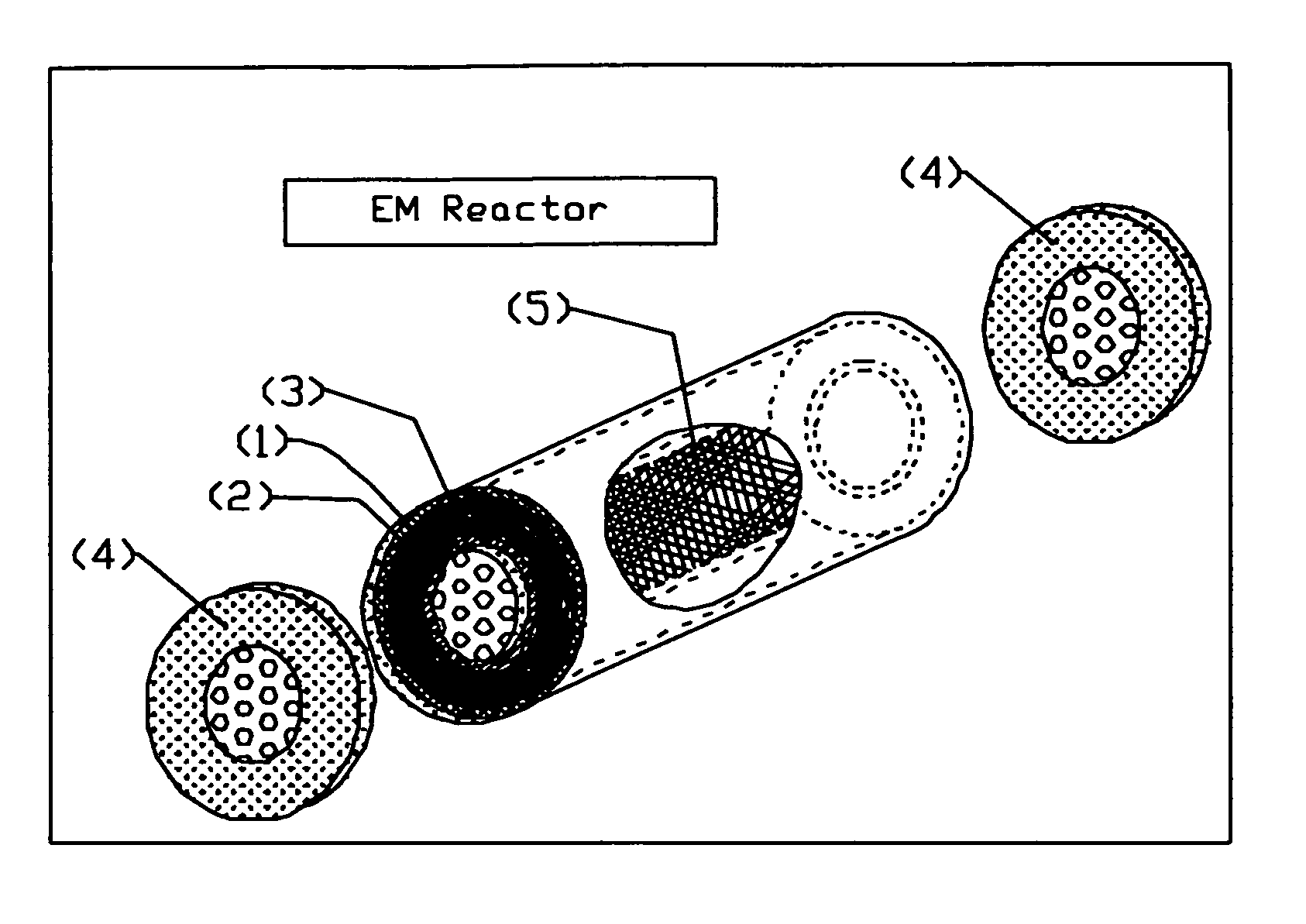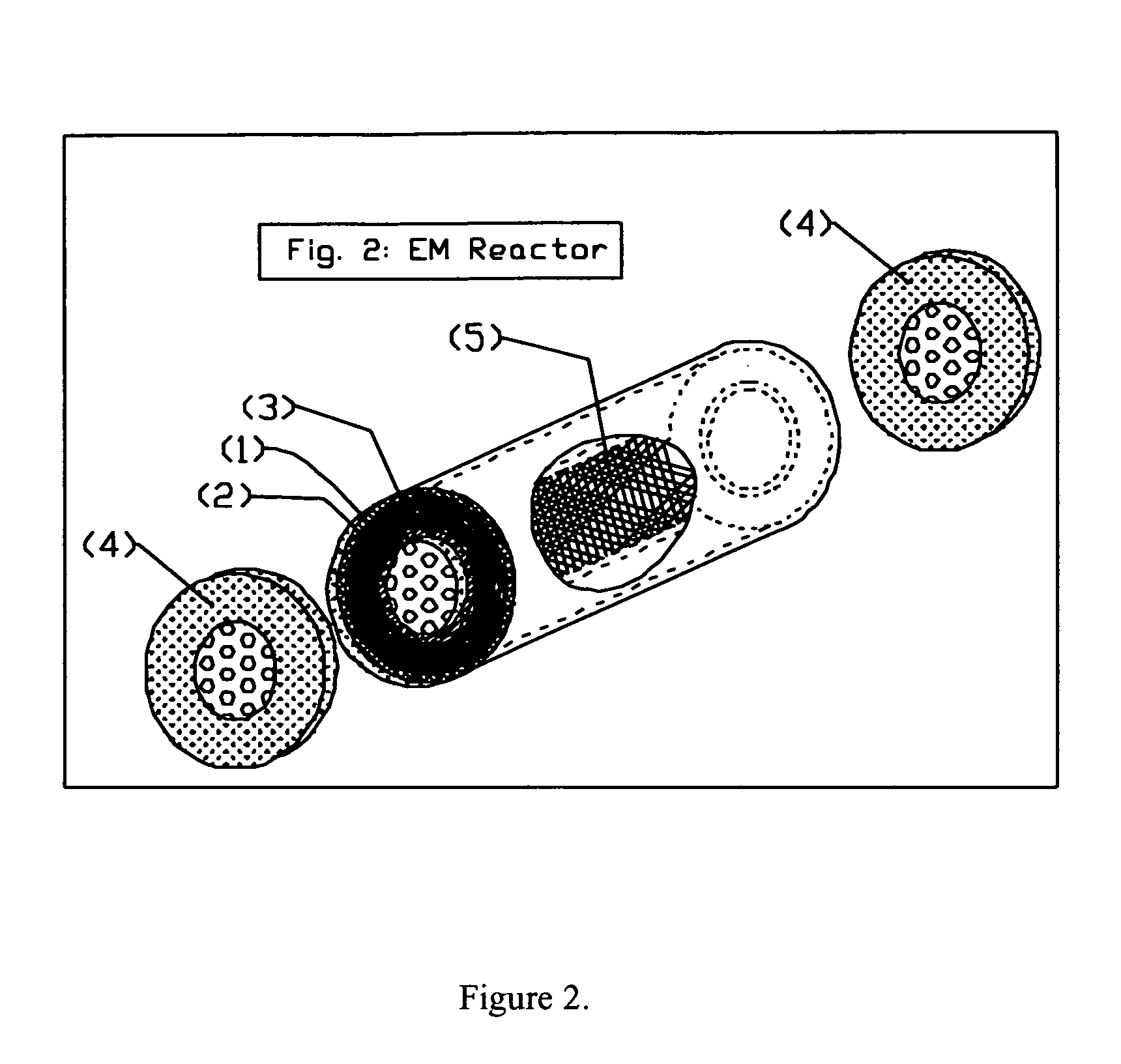Device for the immobilization of nano- and micro-sized particles in a solid-fluid contact vessel facilitating mass-momentum, and heat-transport at the solid-fluid interfaces
a technology of nano- and micro-sized particles and contact vessels, which is applied in the direction of electrostatic separation, chemical/physical/physicochemical processes, energy-based chemical/physical/physical processes, etc., can solve the problems of reducing the effect of immobilization technique, reducing the practicality of immobilization technique types, and reducing the effect of type (2)
- Summary
- Abstract
- Description
- Claims
- Application Information
AI Technical Summary
Benefits of technology
Problems solved by technology
Method used
Image
Examples
Embodiment Construction
[0017]The preferred design of the PM reactor is depicted in FIG. 1. The high-permeability matrix (1) is loaded into the reactor basket (2), which is sealed into the reactor body using sealing lid (3). Two face-pole magnets (4) are then placed abreast of the main section of the reactor body (5) with their ‘North’ poles facing in the same direction. Note that, in this design, the lines of magnetic flux between the two inner facing poles of the magnet will be parallel and of nearly constant density within the boundary of the magnet faces. Note also that the area of each magnet pole-face (normal to the lines of flux) is approximately equal to the side face of the reactor basket. To increase the strength of the magnetic field between the two magnets, a metallic or otherwise high-magnetic permeability magnetic ‘bridge’ (6) can be lowered onto and over the outside of both magnets, creating, in effect, one ‘U’ shaped magnet with the ‘open’ section between the face-poles of the magnets. Henc...
PUM
| Property | Measurement | Unit |
|---|---|---|
| surface area | aaaaa | aaaaa |
| surface area | aaaaa | aaaaa |
| diameter | aaaaa | aaaaa |
Abstract
Description
Claims
Application Information
 Login to View More
Login to View More - R&D
- Intellectual Property
- Life Sciences
- Materials
- Tech Scout
- Unparalleled Data Quality
- Higher Quality Content
- 60% Fewer Hallucinations
Browse by: Latest US Patents, China's latest patents, Technical Efficacy Thesaurus, Application Domain, Technology Topic, Popular Technical Reports.
© 2025 PatSnap. All rights reserved.Legal|Privacy policy|Modern Slavery Act Transparency Statement|Sitemap|About US| Contact US: help@patsnap.com



